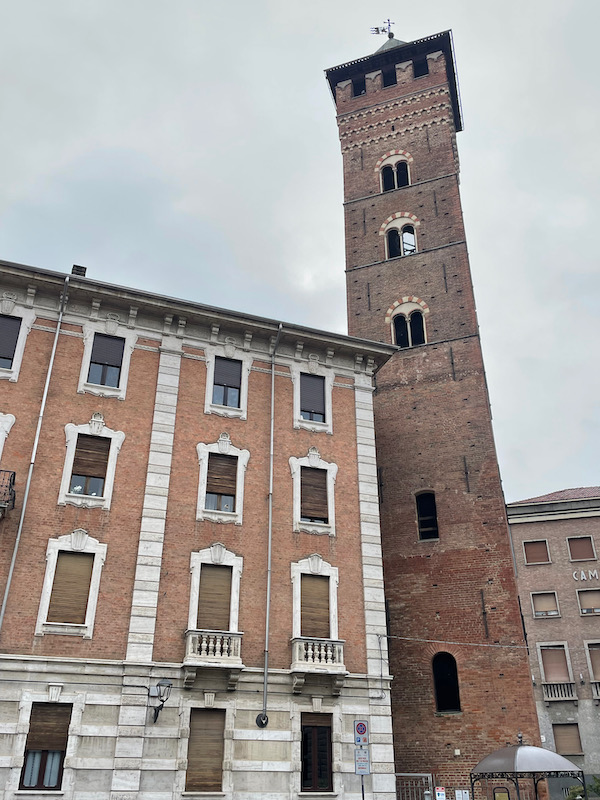Our Blog - Tuscany 2024 Trip - Asti, Italy
Our last stop in Italy was the city of Asti. Growing up, I had heard of "Asti Spumante" but I didn't realize that this white sparkling wine actually came from a city named Asti. Made from the Moscato Bianco grape, Asti Spumante it is sweet sparkling wine that is low in alcohol, often served with dessert. Unlike Champagne, Asti Spumante is not made sparkling through the use of secondary fermentation in the bottle, but rather through a single tank fermentation method. It retains its sweetness through a complex filtration process. After World War II, it saw an uptick in popularity in the United States as returning soldiers from the war brought their taste for the light, sweet wine home with them. Due to this, it got a rather poor reputation as being a "poor man's Champagne" and so in 1993, they dropped the "Spumante" part of the name and just call it Asti now.
People have lived in this area since the Neolithic period. In 124 BC, the Romans built a castrum here, which eventually evolved into a full city named Hasta. There are quite a few medieval buildings, towers, and fortified houses.
There are a set of "Fortified Houses" or "Tower Houses" in Asti, including this one. Torre Solaro (Solaro Tower) was built around 1250 and, like quite a few of the towers in town, have been lowered so that it is now shorter than it originally was. The Gothic-style tower has a smooth square barrel with single-light windows on the upper floors, to which are added two mullioned windows with pointed arches.
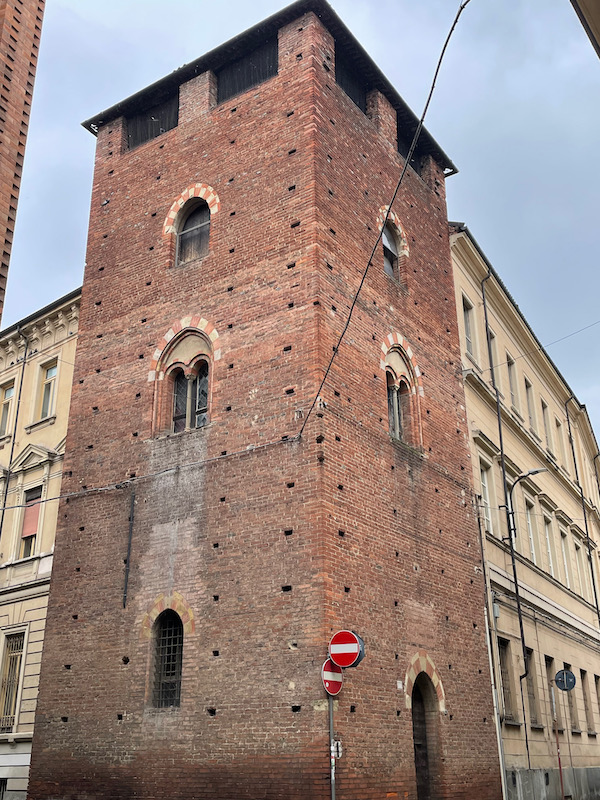
Starting from around the 11th century, the medieval town of Asti was surrounded by medieval fortification walls. Only a section of the walls has been preserved but there are pieces here and there around the city, including this little section next to a parking lot at Piazza Castigliano.
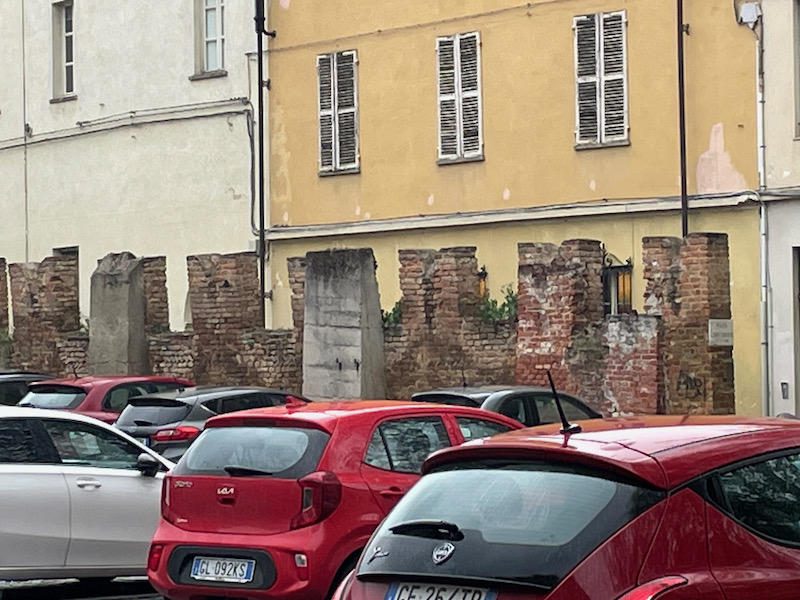
This next picture shows the top of the tower and dome of the Cathedral of Santa Maria Assumption. We didn't actually realize what tower/building this was until we headed down the street and ended up at the Cathedral.
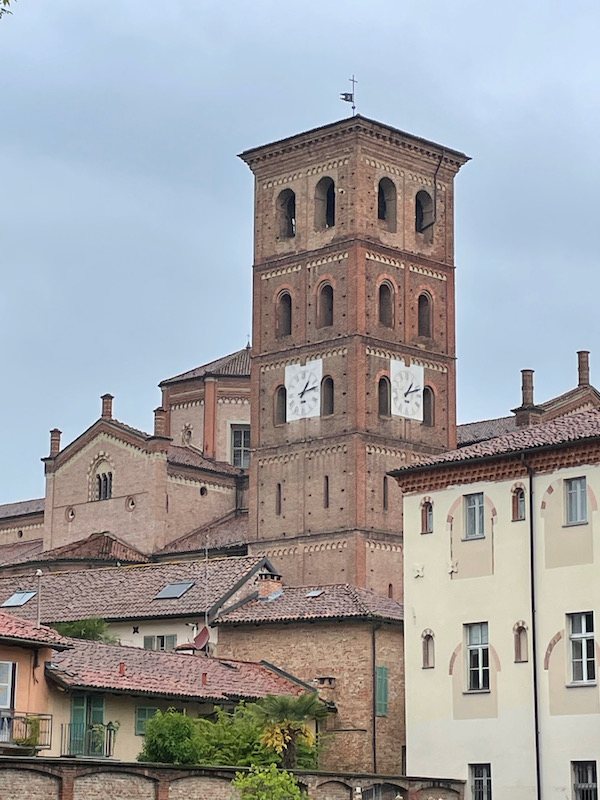
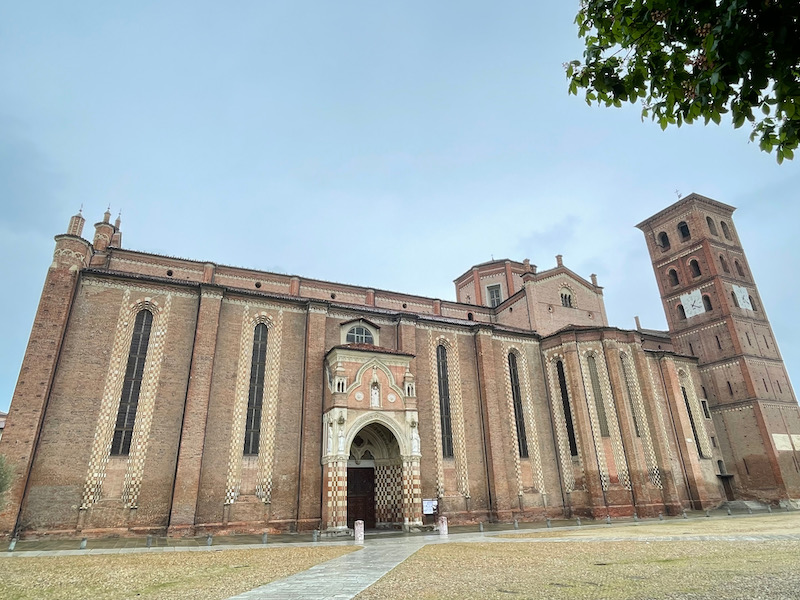
The Gothic cathedral is the result of three rebuilding phases that took place over 700 years, starting around the 5th or 6th century. The main part of the church is made from terracotta and tuff, with areas of polychrome decoration, and bricks alternating with sandstone blocks. You can see this around each of the tall, narrow windows on the side. The 6-story Romanesque tower with the odd-looking white clocks on the facades, was added in 1266. This is another tower that was lowered, since it originally had 7 stories. The cathedral’s main entrance is known as the Portico Pelletta and is situated on the southern side of the building. It also has the same type of alternating stone-and-brick style on the columns, and then quite a few statues around the top 2 levels.
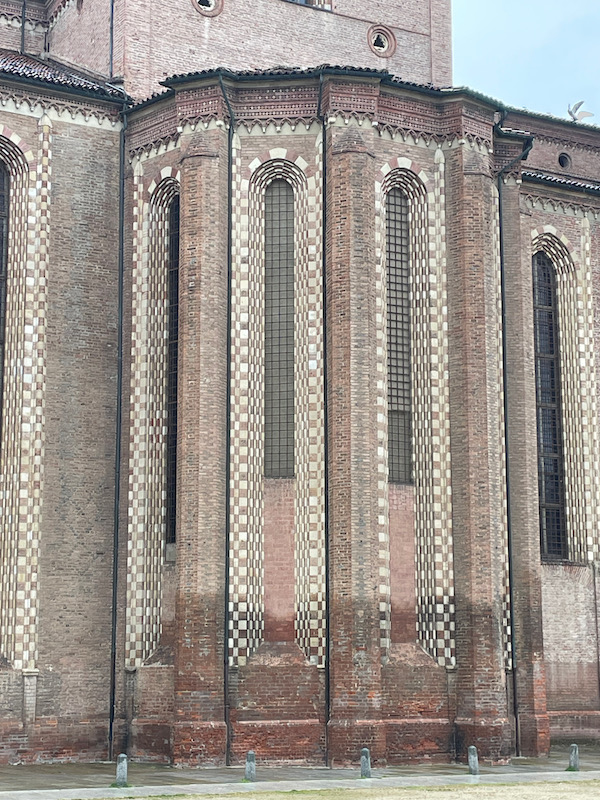
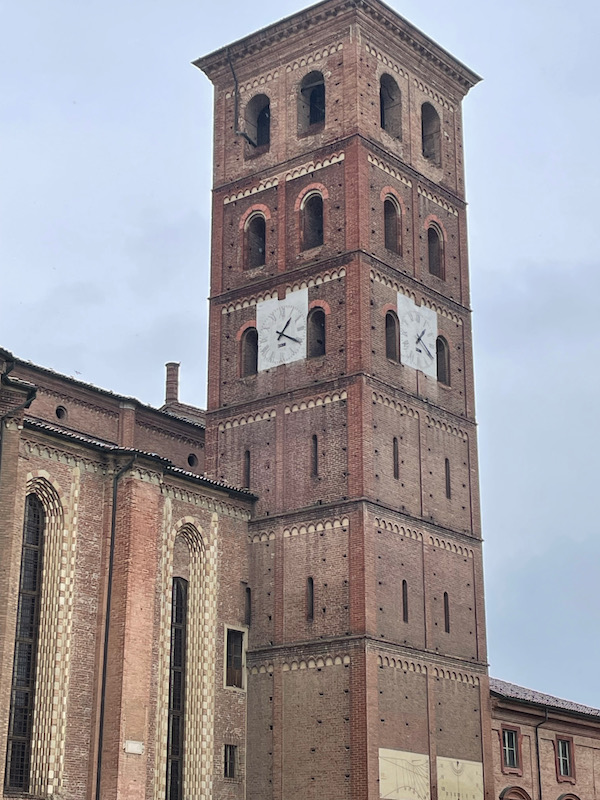
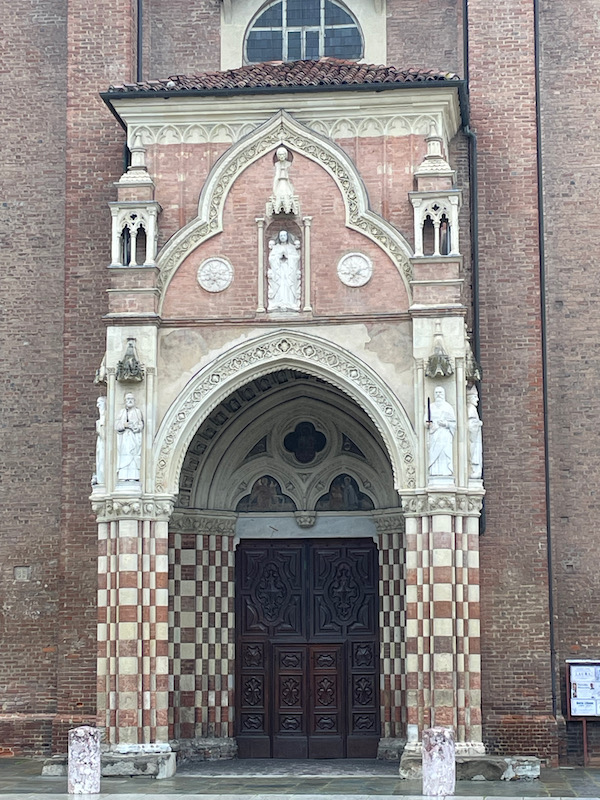
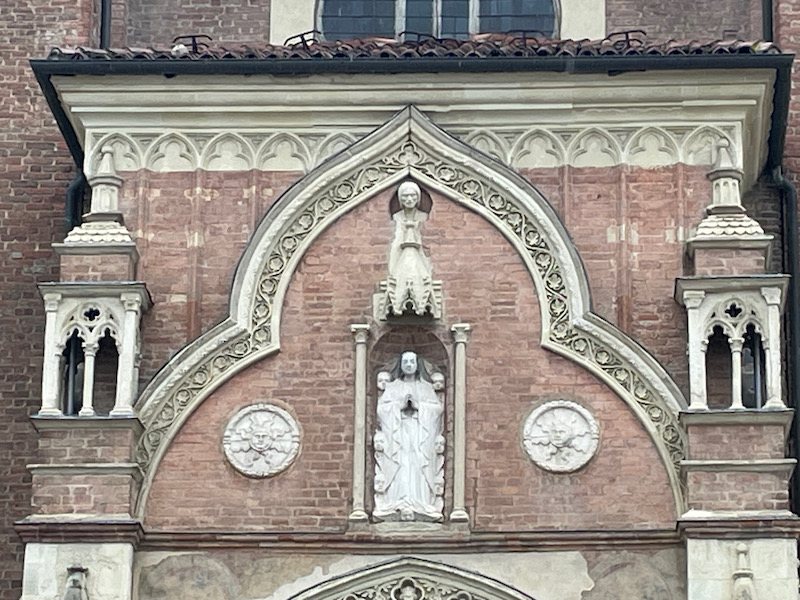
The is the Western façade looks a bit different than the other side, which I assume was part of a more recent building phase. The lower level has 3 portals with Gothic pediments although only the middle one is now a door. The two side portals were walled-up in 1711 to allow a fresco to be done on the interior showing the solemn consecration of the Romanesque cathedral in 1095 by Pope Urban II. Our little tour of Asti took place over lunch, so (of course) the church was closed for a lunch break, so I only have exterior pictures. Supposedly the entire interior is decorated with 18th-century frescoes.
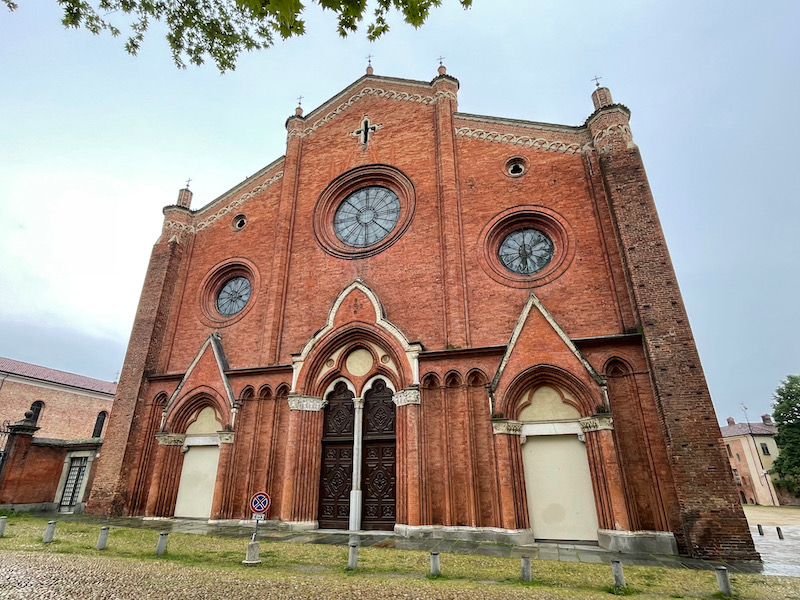
Piazza Cairoli (sometimes called Piazza del Cavallo) was created after the assassination of King Umberto I specifically to place the equestrian statue of the King her. Around the square are a few other interesting buildings, including the Church of San Guiseppe and Palazzo Alfieri, and a former 16th century monastery that houses a museum.
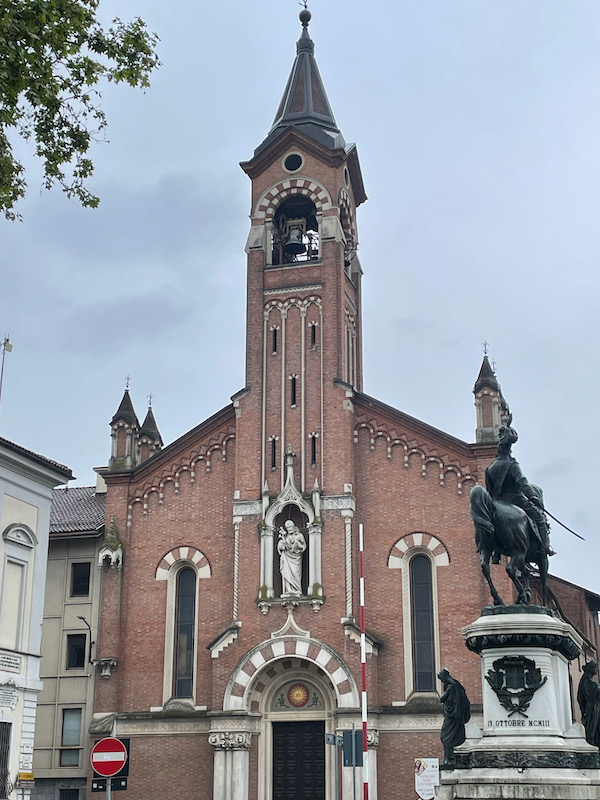
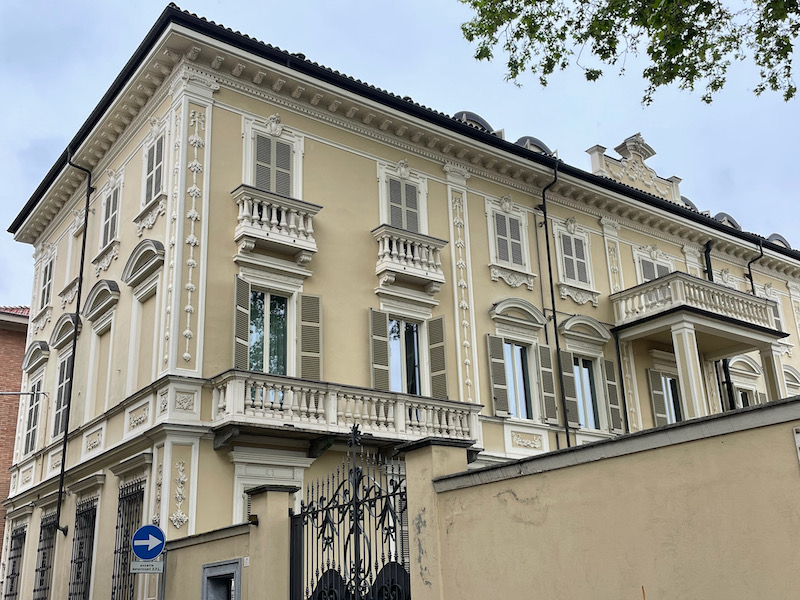
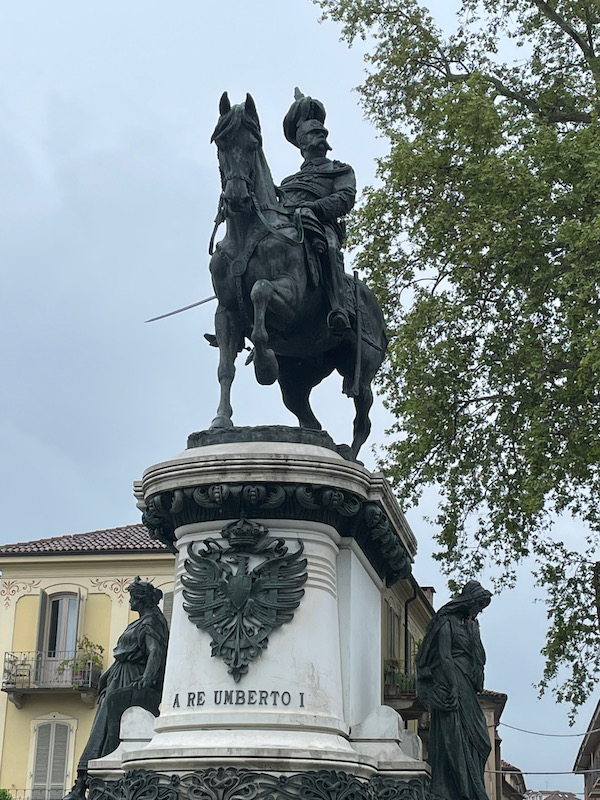
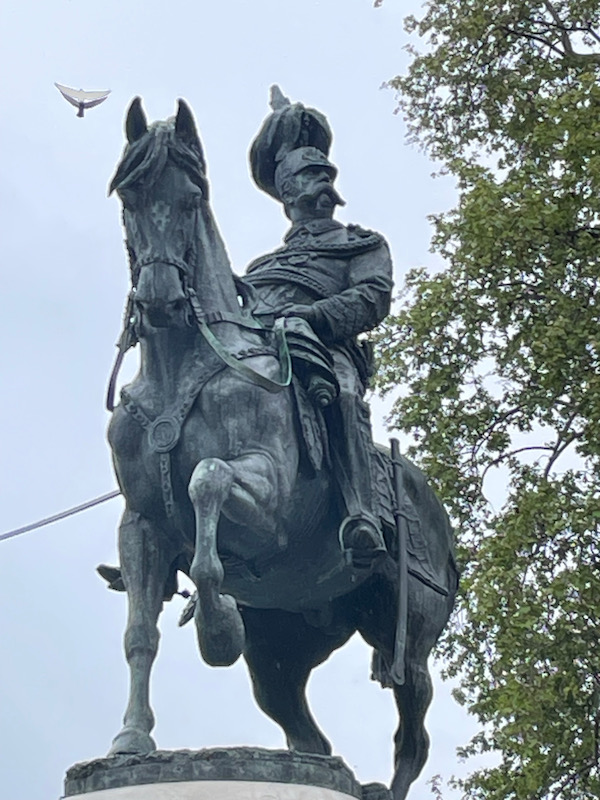
Piazza Roma has been changed multiple times from the Middle ages to the 19th century. In the Middle Ages, it was called "dei Comentini" because the towers and home of the Comentina family were located here. The tall tower behind the newer-looking building is that original tower, but the other buildings were demolished to make room for a convent. Then in the 18th century, a fruit, egg, and poultry market were moved here. In the late 19th century, the square was enlarged and the current neo-Gothic building was built here. The building seems to be called the "Medici del Vascello Castle" and you can rent a 2-bedroom apartment up at the top on Booking.com although it gets less-than-stellar reviews. is an important example of medieval architecture in the historic center of Asti. The tower dates back to the original construction of the 14th century while the palace first became a church, then a theater and towards the end of the 19th century took the shape of the current castle, which by will of the patriarch Luigi de Medici strongly manifests the Art Nouveau and neo-Gothic fashions typical of the time. Evidence of this is the family coat of arms which can still be admired today when entering the main door.
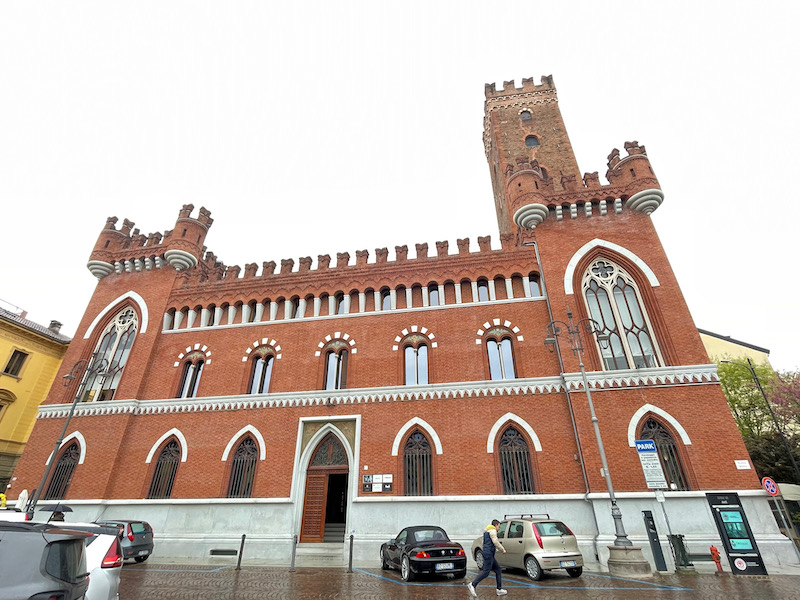
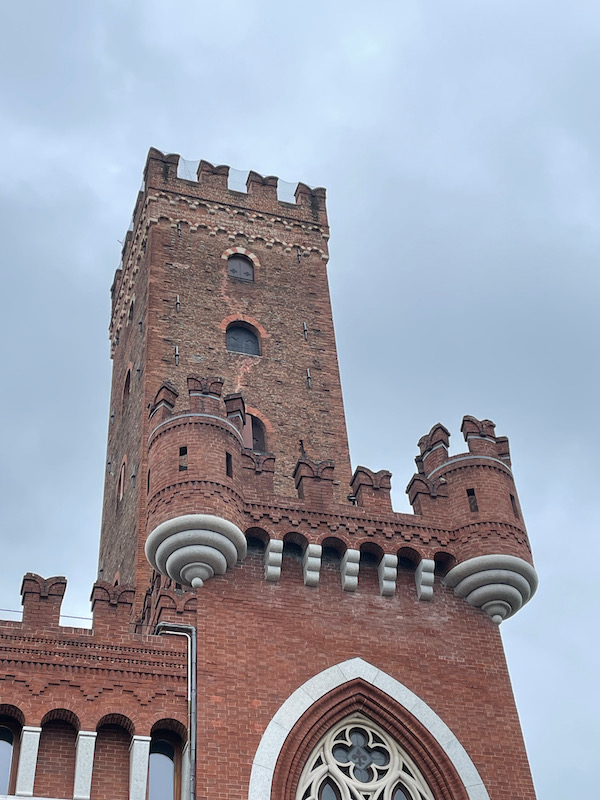
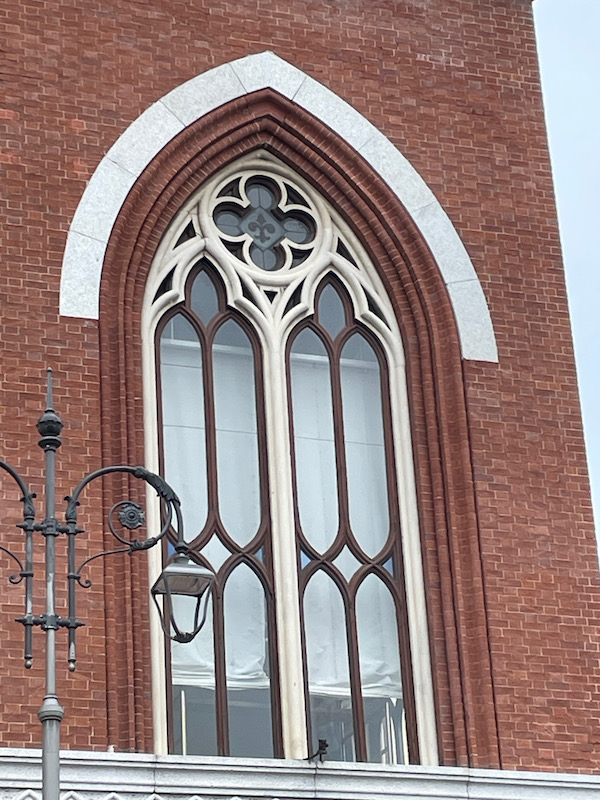
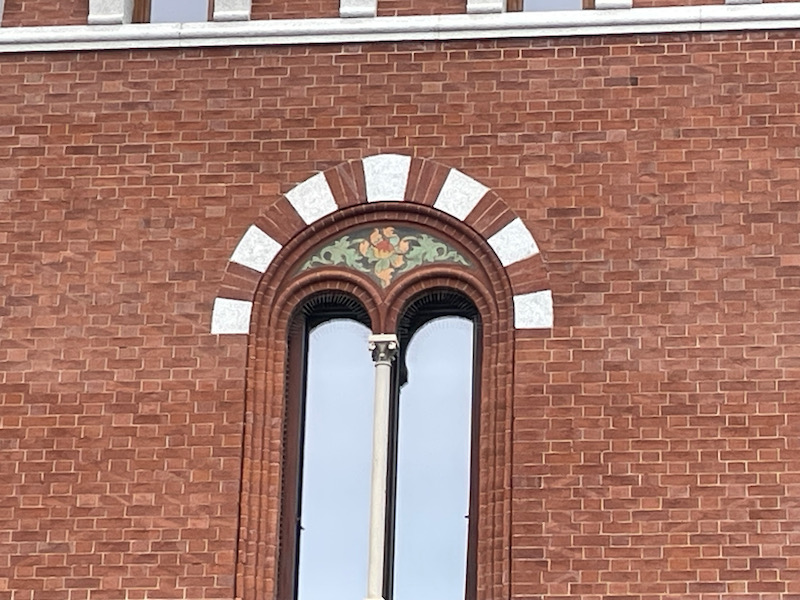
In the center is monument with a female figure, an allegory of Italy, caught in the act of offering a laurel wreath to the obelisk, a funerary symbol used in the celebrations of the those killed in the "Risorgimento", the 19th century movement for Italian unification that resulted in the establishment of the Kingdom of Italy in 1861.
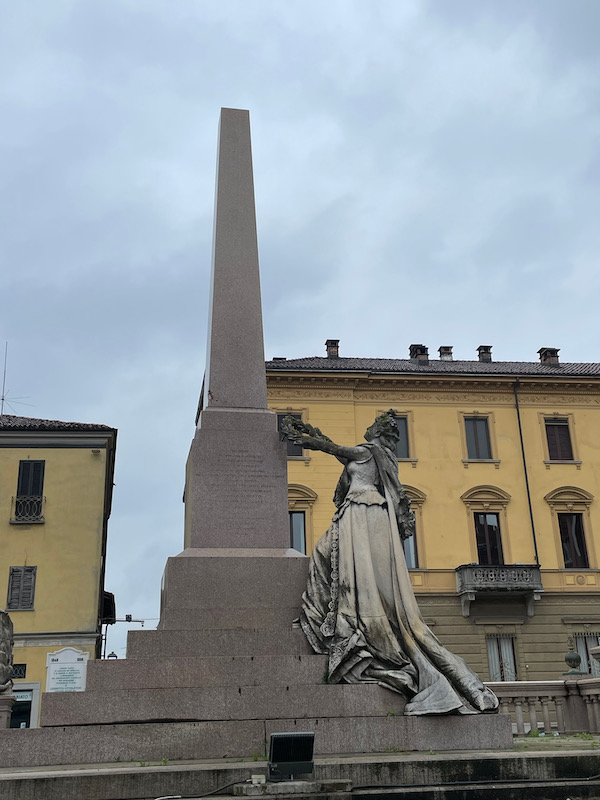
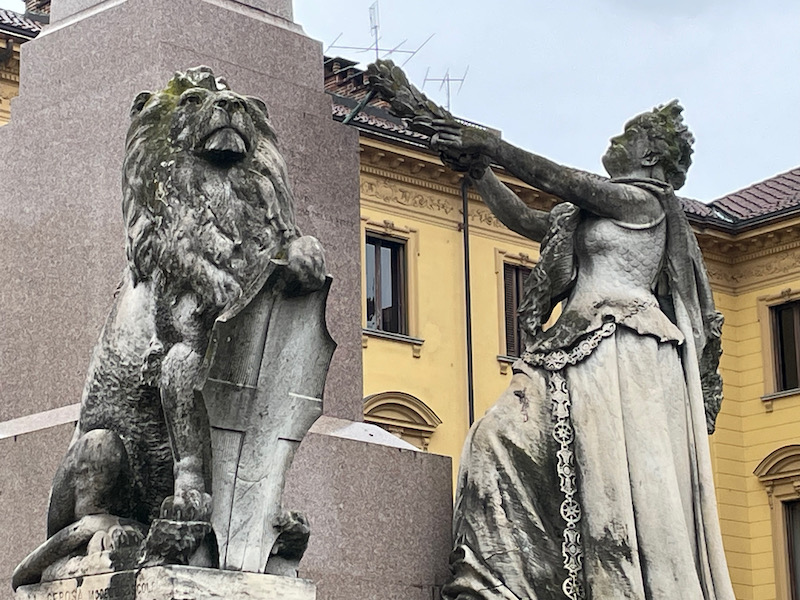
The Troyana Tower is one of the architectural symbols of the city of Asti. The tower was built in the 13th century in the center of the medieval town. In the 13th century, the bell of the tower signaled the hours and the opening of schools.
